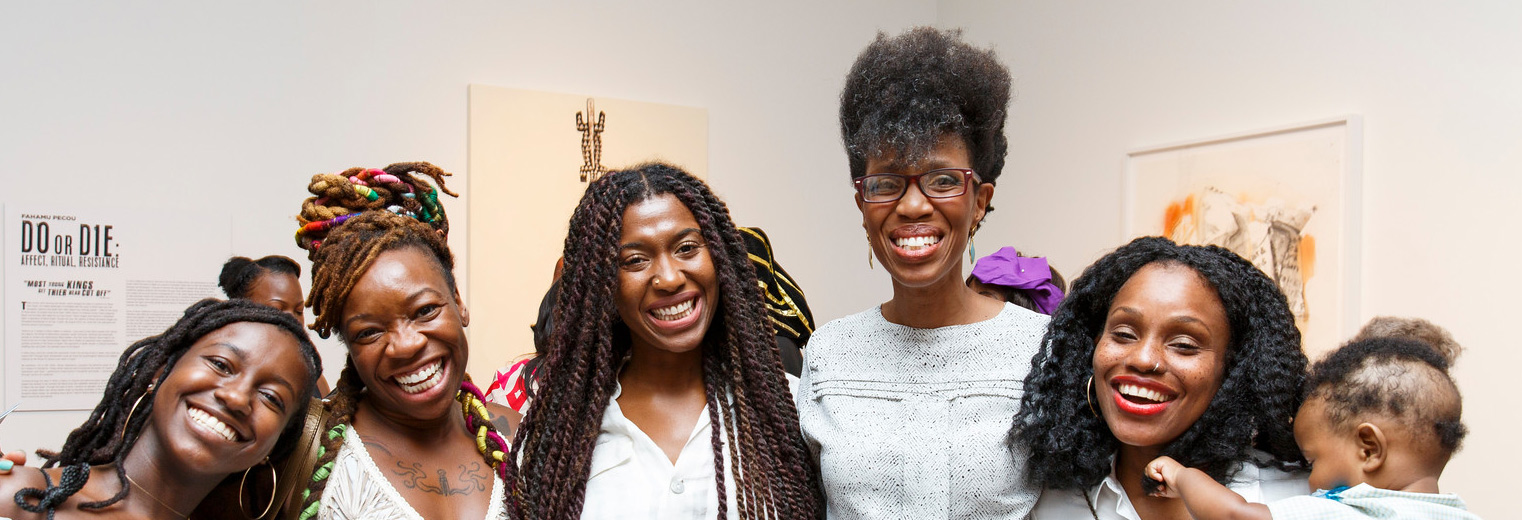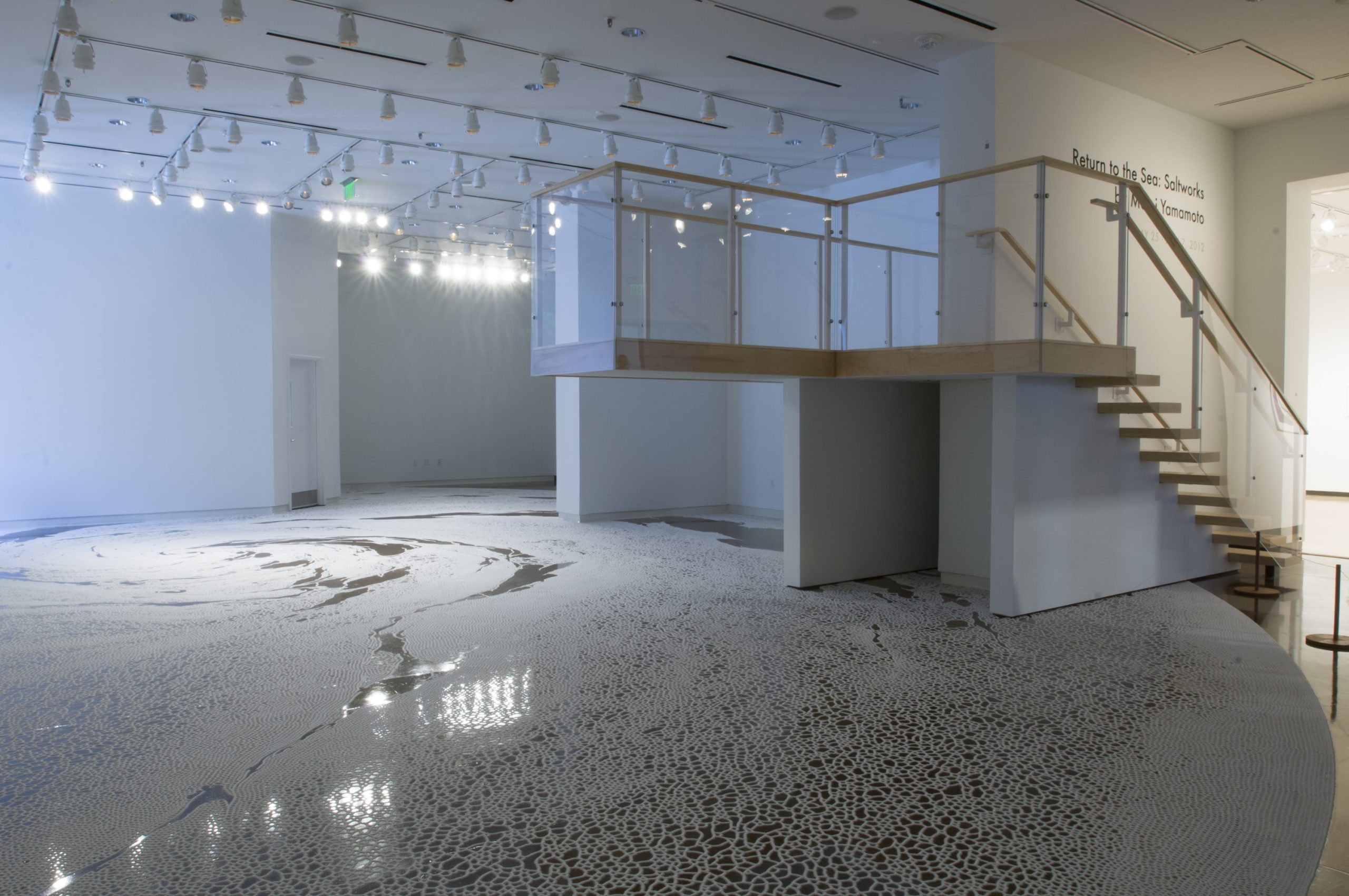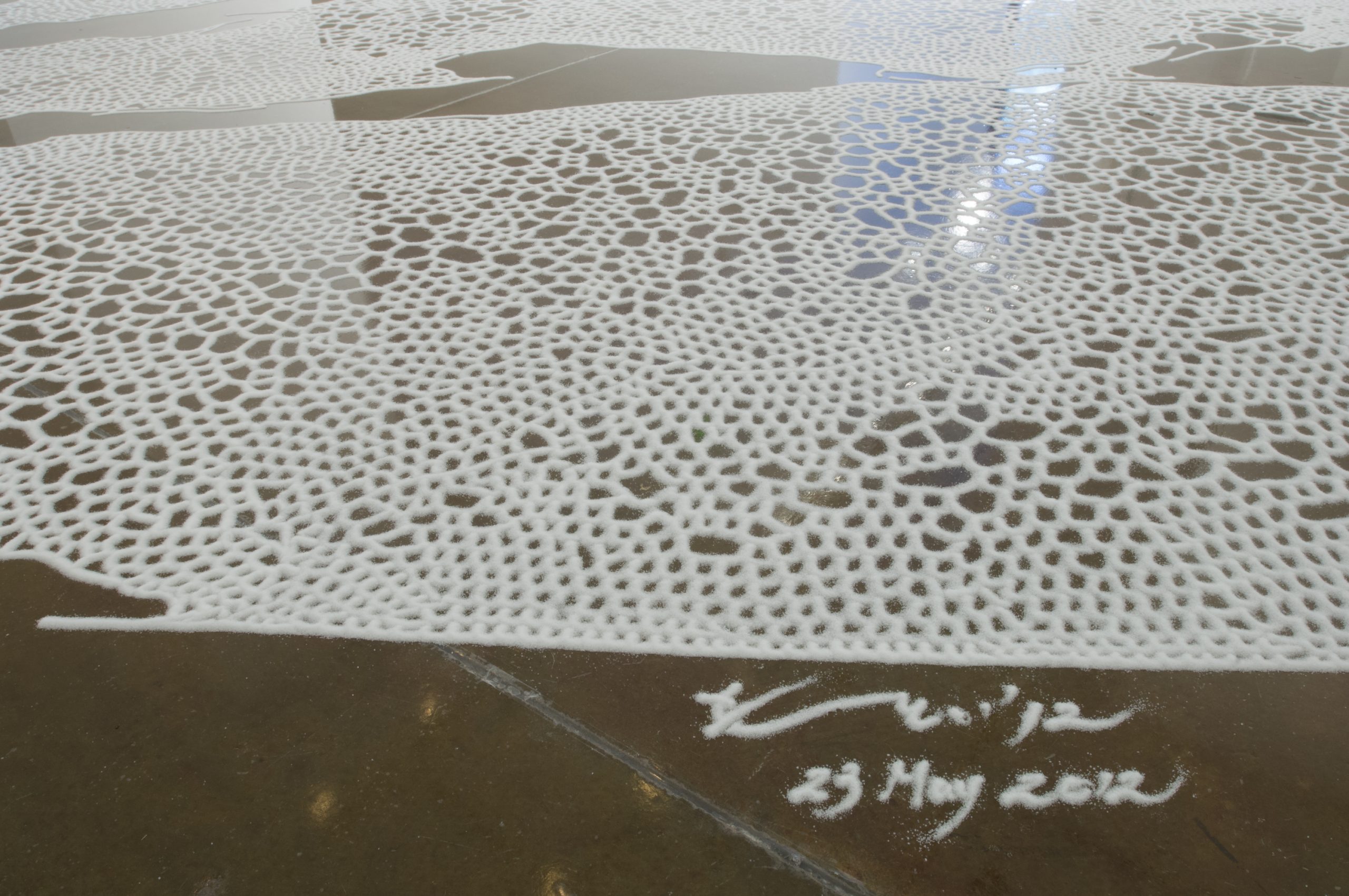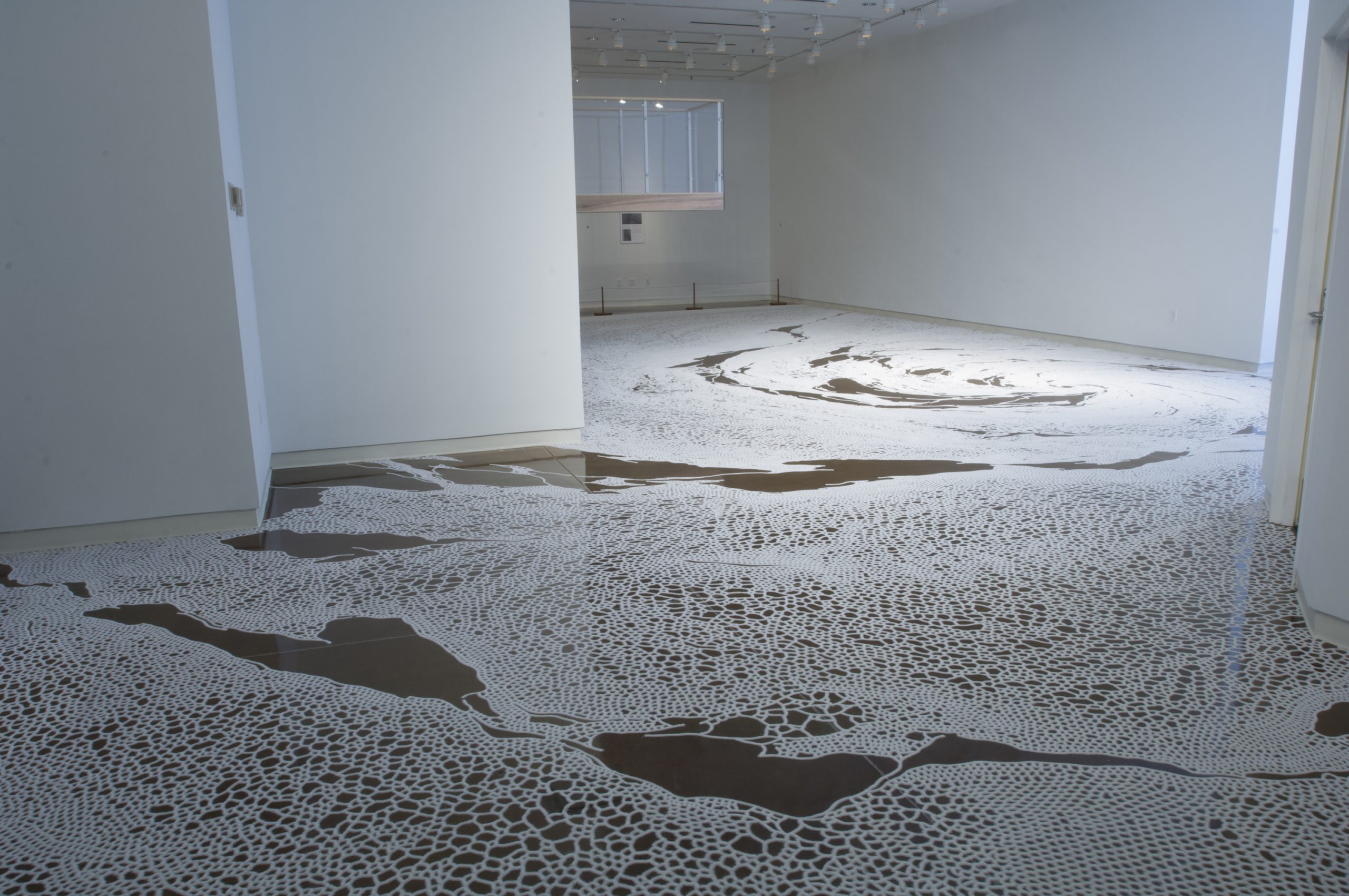


In 2012, the Halsey Institute hosted internationally renowned artist Motoi Yamamoto to create one of his saltworks as part of Return to the Sea: Saltworks by Motoi Yamamoto. He was born in Onomichi, Hiroshima in 1966 and received his BA from Kanazawa College of Art in 1995. He has exhibited his award-winning creations around the globe in such cities as Athens, Cologne, Jerusalem, Mexico City, Seoul, Tokyo, and Toulouse. He was awarded the Philip Morris Art Award in 2002 as well as the Pollock-Krasner Foundation Grant in 2003. Since his residency at the Halsey in 2012, Yamamoto has worked in the US, Germany, Israel, Russia, and France.
The artist began working in salt as a way to mourn and remember his sister. His installation at the Halsey was a labyrinth of intricate, connecting lines. Yamamoto says, “Drawing a labyrinth with salt is like following a trace of my memory. Memories seem to change and vanish as time goes by; however, what I seek is to capture a frozen moment that cannot be attained through pictures or writings. What I look for at the end of the act of drawing could be a feeling of touching a precious memory.” Like Buddhist sand mandalas, his creations of salt are dismantled with help from the public and returned to the sea. Here, he is interviewed by intern Madeleine Mitchell.
1. You worked with the Halsey in 2012, how do you think your work has changed in the past 8 years?
The main concept of “drawing not to forget” hasn’t changed, but I’ve been exploring different ways such as new patterns, new floor materials including mirrors etc., in order to expand the way I express my artwork. I’ve also been working jointly with other artists and companies to create collaborative work.
My wife passed away in 2016 and now I’m a single parent raising an 8yo daughter myself, but this experience of raising a child has given me more depth and breadth to my work. In the past, my work has mainly used rather familiar shapes and patterns such as labyrinth and swirls, but now I use different design themes I find in my daily life with my daughter such as her braided hair and magnolia flowers we see on our walks.
2. Is there one installation that stands out as being particularly challenging, rewarding, or unexpected in outcome? Why?
There are 2 art museum directors in this world with whom I always feel so excited to work; so excited that I always end up working way too hard for them, to make them happy. Mark is one of them. In fact, I worked a little too hard for the 2012 solo exhibition in Charleston, and was hospitalized to go through an emergency operation as soon as I got back to Japan! In any case, working with him has been that exciting and rewarding for me as an artist.

Motoi Yamamoto, Return to the Sea: Saltworks, installation view. Courtesy the artist. Photo: Rick Rhodes.
3. Are you engaged in any new artistic or personal practices as a result of social distancing? If so, what are they?
I’ve been working on new, additional methods such as better camera equipment etc. in order to share and distribute my artwork via VR viewing etc. My website is being completely updated and you should be able to view my work there soon, so I’m pretty excited about that. The renewed website is scheduled for a release sometime at the end of September this year.
4. Most of the discussion of your work is about the mental and emotion process, but I’m curious what the physical results are. How does your body react to the strain of creating a saltwork?
The way I work on my installation, sitting on a hard floor for 10+ hours every day, puts a great physical strain especially on my back and my knees. During installation work, I use taping to give myself more support, take pain killers to mitigate the pain. Daily exercises, at least for an hour a day, also plays a critical role in order to maintain physical and muscle strength that I need for my work.
However, part of me believes that some physical pain is inevitable or even necessary at some point as part of my work. What I pursue in my artwork is not something you can finish instantaneously with some kind of computer-programmed device.
5. Have viewers expressed their personal experiences of mourning and solace from seeing your work? If so, which have struck you the most?
The initial trigger for my artwork was the death of someone I loved, and I often feel that my artwork actually helps some people to heal, people who went through similar experiences as mine. My experiences during the residence program Force of Nature that the Halsey Institute organized back in 2006 made a particularly strong impression on me. A man collected the salt from my installation that I created at a university library, and brought it back to the Atlantic ocean. His story was published in a newspaper, which was sent to me later, and that newspaper article is still pinned on the wall in my art studio today.

Motoi Yamamoto, Return to the Sea: Saltworks, installation view. Courtesy the artist. Photo: Rick Rhodes.
6. You’ve worked internationally, how has the reception and interpretation of your installations noticeably differed by country?
I don’t usually notice any significant difference, possibly because salt is a natural substance that’s collected directly from the ocean or the earth (rock salt), or maybe because it’s one of our essential food ingredients to support our lives and people know that salt is a critical element both historically and culturally.
The process of my installation work involves physical work, festivity, expression of life, audience participation, connection to mother nature, as well as view of outer space, so I believe that this worldly view on salt is one factor that contributes to how people understand my artwork in a similar way everywhere I go.
7. Do you have any desire to work with other mediums than salt?
Yes, using salt is not the purpose, but merely a method or a tool for my artwork. I use different materials for my artwork other than installation.
8. What books, music, art, etc are particularly resonating with you right now?
I try to spend as much time as possible to be in nature and to try new things in my daily life. Just the other day, my daughter and I went to a local rice field to plant rice seedlings, we grow sunflowers in our balcony, we sew face masks using a sewing machine, we bake cookies together etc. Days go by pretty quickly between spending time with my daughter and working on creating artwork.
9. Looking at your labyrinth works, I immediately see sea foam, hurricanes, sea fans, and brain coral. Is this marine appearance intentional or just the form the memories/labyrinths take?
As you can see, even a giant labyrinth is formed as a result of very small repetitive patterns. Small repetitive work shaping the final piece of work is the common theme throughout my artwork. I’d say that this is almost like my personal mantra, or a belief, reflecting my desire on how to lead my life.
10. What are your bucket list locations where you would love to do a saltwork?
To be honest, I don’t really have any place particular in mind. My goal is to keep creating, and the location of where I do it is not as important as the act of creation itself. That said, I’d really love to take my daughter to Charleston and work on installation there again someday in the future. That would be absolutely fantastic. So, Charleston is now on my bucket list!
– by Madeleine Mitchell, Halsey Institute intern